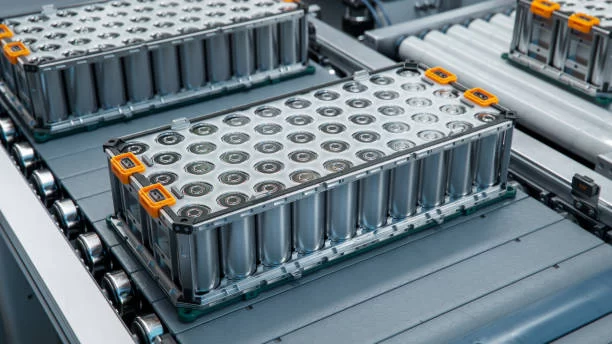Common Types of Battery Cells and Their Distinctions
In daily life and in the field of energy storage, there are various types of battery cells with their own characteristics and differences.
Common Battery Cell Types in General Use
Lithium-ion Battery Cell (Lithium-ion Battery Cell):
Advantages: It has high energy density, a low self-discharge rate, a long cycle life and is relatively light in weight. The charging speed is relatively fast and it is able to provide a long operating time for devices.
Disadvantages: The cost is relatively high. It has strict requirements on charging and usage conditions. Overcharging, overdischarging or a high-temperature environment may cause damage to the battery or even lead to dangerous situations.
Applications: Widely used in mobile phones, laptops, electric vehicles and so on.
Lithium Polymer Battery Cell (Lithium Polymer Battery Cell):
Advantages: The shape is more flexible, and it can be made into various shapes and sizes to adapt to the space requirements of different devices. The safety is relatively high.
Disadvantages: The cost is relatively high, and the energy density is slightly lower than that of lithium-ion batteries.
Applications: Commonly used in ultra-thin electronic products such as tablet computers and smart watches.
Nickel-Metal Hydride Battery Cell (Nickel-Metal Hydride Battery Cell):
Advantages: The cost is low, it is environmentally friendly, has no memory effect and has a relatively strong ability to withstand overcharging and over discharging.
Disadvantages: The energy density is relatively low, the self-discharge rate is relatively high and the cycle life is relatively short.
Applications: Commonly seen in electric toys, hybrid electric vehicles and the like.
Nickel-Cadmium Battery Cell (Nickel-Cadmium Battery Cell):
Advantages: It has good high-current discharge performance and a relatively large number of charge-discharge cycles.
Disadvantages: It contains toxic cadmium elements, which is greatly harmful to the environment and has an obvious memory effect.
Applications: It has been gradually replaced by other types of batteries due to environmental protection reasons.
Lead-Acid Battery Cell (Lead-Acid Battery Cell):
Advantages: The technology is mature, the cost is low and the reliability is relatively high.
Disadvantages: The energy density is low, it is heavy, the cycle life is short, and it requires regular maintenance.
Applications: Commonly used in vehicle starting power supplies, electric bicycles, uninterruptible power supplies (UPS) and the like.
For example, in the field of drones, in order to pursue a longer flight time and lighter weight, lithium-ion battery cells are usually selected; while in some household small appliances with lower prices, the lower-cost nickel-metal hydride battery cells may be used.Lithium-ion battery cells are popular.
Common Battery Cell Types in the Energy Storage Field
Here are the main battery cell types (with lithium-ion battery cells being mainly introduced as the following, while other types account for a relatively small proportion but also have application scenarios):
Lithium Iron Phosphate (LiFePO4) Battery Cell:
Advantages:
It has a long cycle life, usually reaching thousands of times or even higher.
It has relatively high safety and good thermal stability, and is not prone to dangerous situations such as thermal runaway.
There is no memory effect and there is no need to deliberately fully charge and discharge for maintenance.
The raw materials are relatively abundant and the cost has certain advantages.
Disadvantages:
The energy density is slightly lower than that of ternary materials.
The low-temperature performance is not ideal enough, and there is a certain attenuation of capacity and performance in a low-temperature environment.
Ternary Lithium Battery Cell (such as Lithium Nickel Cobalt Manganese Oxide NCM, Lithium Nickel Cobalt Aluminum Oxide NCA, etc.):
Advantages:
It has a relatively high energy density and can achieve relatively high endurance.
The low-temperature performance is relatively better than that of lithium iron phosphate.
Disadvantages:
In terms of safety, it is relatively worse than lithium iron phosphate, and there may be thermal runaway and other dangerous situations in some extreme cases.
The cycle life is usually slightly lower than that of lithium iron phosphate (but it is constantly being improved and enhanced).
The cost is relatively high (because it contains precious metal elements such as cobalt).
Lithium Titanate Battery Cell:
Advantages:
It has extremely good fast charging performance and can achieve fast charging in a short time.
The cycle life is very long.
It has a wide working temperature range and good high and low temperature performance.
Disadvantages:
The energy density is very low, which limits its application in many large-capacity energy storage scenarios.
The cost is relatively high.
Sodium Battery Cell (Sodium-ion Battery) (gradually emerging and being tried in the energy storage field in recent years):
Advantages:
The raw material resources are abundant and the cost is expected to be lower than that of lithium-ion batteries.
The safety is relatively good.
The high and low temperature performance is good.
Disadvantages:
At present, the energy density is lower than that of lithium-ion batteries.
The industrialization is still in the early stage of development and the technological maturity needs to be further improved.
Lead-Acid Battery Cell (traditional type, but the proportion is gradually decreasing in the new energy storage field):
Advantages:
The technology is mature and the production process is simple.
The price is relatively low (the initial investment cost is low).
Disadvantages:
The energy density is low.
The cycle life is relatively short, usually several hundred cycles.
The maintenance is relatively troublesome (it requires regular inspection of the electrolyte, etc.) and it is not environmentally friendly (containing heavy metals such as lead).

